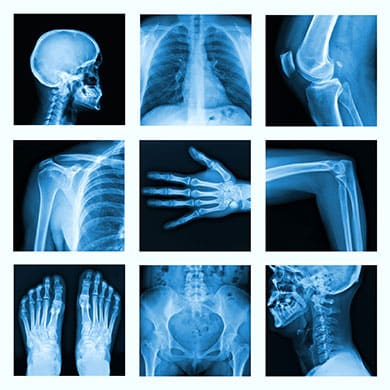X-Ray Excellence: From Medical Diagnostics to Industrial Innovation...!!!
X-rays are a powerful tool with diverse applications in medicine, industry, and scientific research. Their ability to provide detailed images of internal structures has revolutionized diagnostics and treatment, improved industrial quality control, and advanced scientific knowledge. By understanding the uses and safety considerations of X-rays, we can continue to harness their potential while minimizing risks.

X-rays are a form of electromagnetic radiation that have become invaluable in medical diagnostics, industrial applications, and scientific research. Discovered by Wilhelm Conrad Roentgen in 1895, X-rays have since revolutionized various fields.
What Are X-Rays?
X-rays are a type of electromagnetic radiation with wavelengths ranging from 0.01 to 10 nanometers. They possess higher energy and shorter wavelengths compared to visible light, enabling them to penetrate various materials, including human tissue. X-rays are categorized into two types based on their energy levels:
-
Soft X-Rays: Lower energy X-rays (0.12 to 12 keV) used for imaging soft tissues.
-
Hard X-Rays: Higher energy X-rays (12 to 120 keV) used for imaging dense materials like bones and metals.
How Do X-Rays Work?
X-ray imaging involves the use of an X-ray machine that emits a controlled beam of X-rays. When these rays pass through the body, different tissues absorb varying amounts of radiation. Dense tissues like bones absorb more X-rays and appear white on the resulting image, while less dense tissues like muscles and organs appear in shades of gray. The captured images are called radiographs.

Uses of X-Rays
Medical Applications
-
Diagnostics:
-
Bone Fractures and Dislocations: X-rays are commonly used to detect fractures, dislocations, and other skeletal issues. They provide clear images of bones, aiding in accurate diagnosis and treatment planning.
-
Dental Imaging: Dentists use X-rays to examine teeth, gums, and jawbones. Dental X-rays help identify cavities, impacted teeth, and other oral health issues.
-
Chest X-Rays: Used to diagnose conditions affecting the lungs, heart, and chest cavity, such as pneumonia, tuberculosis, and lung cancer.
-
-
Mammography:
-
Breast Cancer Screening: Mammograms are specialized X-ray exams used to detect early signs of breast cancer. They provide detailed images of breast tissue, aiding in early diagnosis and treatment.
-
-
Computed Tomography (CT):
-
Cross-Sectional Imaging: CT scans use X-rays and computer processing to create detailed cross-sectional images of the body. They are used to diagnose various conditions, including tumors, internal injuries, and infections.
-
-
Fluoroscopy:
-
Real-Time Imaging: Fluoroscopy provides real-time moving images of the body's internal structures. It is used in procedures such as barium enemas, catheter insertions, and joint injections.
-
-
Interventional Radiology:
-
Guided Procedures: X-rays guide minimally invasive procedures like angioplasty, stent placement, and biopsies. This reduces the need for open surgery and speeds up recovery times.
-
Industrial Applications
-
Non-Destructive Testing (NDT):
-
Quality Control: X-rays inspect the integrity of materials and structures without causing damage. NDT is used in industries like aerospace, automotive, and construction to detect flaws, cracks, and defects in products.
-
-
Security Screening:
-
Baggage Scanners: Airports and security checkpoints use X-ray machines to scan luggage and parcels, detecting prohibited items and potential threats.
-
Cargo Inspection: X-ray imaging is used to inspect containers and cargo shipments for contraband, explosives, and other illicit materials.
-
-
Art and Archaeology:
-
Artifact Examination: X-rays examine the internal structures of artifacts, paintings, and fossils. This aids in conservation, restoration, and authentication efforts.
-
Scientific Research
-
Crystallography:
-
Molecular Structure Analysis: X-ray crystallography determines the atomic and molecular structure of crystals. It is crucial in fields like chemistry, biology, and material science.
-
Protein Structures: X-ray crystallography has been instrumental in determining the structures of proteins and other biological molecules, aiding in drug discovery and development.
-
-
Astronomy:
-
X-Ray Telescopes: X-rays help study celestial objects like black holes, neutron stars, and supernova remnants. X-ray telescopes, such as the Chandra X-ray Observatory, provide valuable data about the universe.
-
Safety Considerations
While X-rays offer numerous benefits, it is essential to use them safely to minimize exposure to ionizing radiation. Protective measures include:
-
Lead Shields: Using lead aprons or shields to protect sensitive body parts from unnecessary exposure.
-
Limiting Exposure: Using the lowest effective dose of radiation and limiting the frequency of X-ray exams.
-
Professional Training: Ensuring that radiologists and technicians are adequately trained in X-ray safety protocols.
X-rays are a powerful tool with diverse applications in medicine, industry, and scientific research. Their ability to provide detailed images of internal structures has revolutionized diagnostics and treatment, improved industrial quality control, and advanced scientific knowledge. By understanding the uses and safety considerations of X-rays, we can continue to harness their potential while minimizing risks.
What's Your Reaction?

















